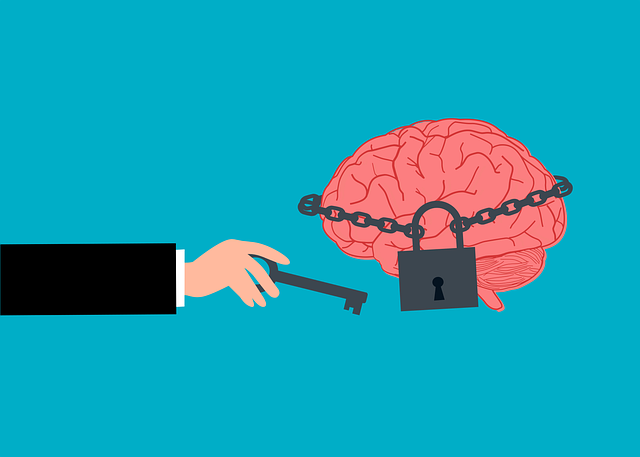Mental health risk management requires understanding interpersonal dynamics, client vulnerability, and traumatic histories. Professionals like Lakewood EMDR Certified Therapists balance effective care with emotional healing risks, focusing on burnout prevention through resilience building. Strategies include setting boundaries, supportive supervision, and open communication to enhance client outcomes while minimizing risks. Lakewood EMDR Certified Therapy offers a powerful approach to risk management, integrating Eye Movement Desensitization and Reprocessing (EMDR) for traumatic memory processing and self-care among professionals. A comprehensive risk management plan assesses demographics, cultural backgrounds, and psychological traits, incorporating research, best practices, and expert knowledge, with regular reviews to adapt strategies for optimal stress management. Safety protocols create a secure environment for techniques like Lakewood EMDR Certified Therapy, enabling timely interventions and inner strength development through proactive risk management.
Mental health professionals constantly navigate complex risks, demanding effective management strategies. This article explores a robust framework for mitigating these risks, focusing on the integral role of Lakewood EMDR Certified Therapy in enhancing patient safety. We’ll delve into understanding risk dynamics within mental health practice, showcasing how certified therapy techniques fortify defenses. Additionally, we’ll outline a comprehensive risk management plan and emphasize the continuous review of safety protocols, ensuring optimal patient care in an evolving landscape.
- Understanding Risk in Mental Health Practice
- The Role of Lakewood EMDR Certified Therapy
- Developing a Comprehensive Risk Management Plan
- Implementing and Reviewing Safety Protocols
Understanding Risk in Mental Health Practice

In mental health practice, understanding risk goes beyond acknowledging potential hazards. It involves a nuanced comprehension of complex interpersonal dynamics, client vulnerability, and the impact of traumatic experiences. Mental health professionals, especially those specializing in EMDR (Eye Movement Desensitization and Reprocessing) therapy like Lakewood EMDR Certified Therapy, navigate a delicate balance between providing effective care and mitigating risks associated with the emotional healing processes they facilitate. Burnout prevention is paramount; it’s not just about managing stress but also fostering resilience to ensure professionals can sustain their work over time.
Risk management in this context isn’t merely an administrative task but requires a comprehensive Mental Health Policy Analysis and Advocacy approach. It involves setting clear boundaries, establishing supportive supervision structures, and cultivating a culture of open communication where professionals feel empowered to discuss challenges without fear of judgment. By prioritizing these strategies, mental health practitioners can enhance client outcomes while minimizing risks, ensuring a safe and nurturing environment for both provider and patient.
The Role of Lakewood EMDR Certified Therapy

Lakewood EMDR Certified Therapy plays a pivotal role in risk management planning for mental health professionals. EMDR, or Eye Movement Desensitization and Reprocessing, is a highly effective therapeutic approach that aids individuals in overcoming traumatic memories and emotional distress. By integrating this technique into their practice, mental health professionals can enhance their clients’ healing journeys while minimizing potential risks associated with repressed trauma.
The benefits of Lakewood EMDR Certified Therapy extend beyond trauma resolution. It promotes self-care practices among mental health professionals by providing them with a robust toolkit to manage their own emotional well-being. Moreover, it fosters positive thinking and cultural sensitivity in mental healthcare practice, ensuring that every client receives care tailored to their unique needs and backgrounds. This holistic approach not only enhances therapy outcomes but also contributes to the overall resilience of both professionals and clients alike.
Developing a Comprehensive Risk Management Plan

Developing a comprehensive risk management plan is an indispensable step for mental health professionals to ensure patient safety and maintain ethical standards. This process involves a meticulous assessment of potential risks associated with various aspects of therapy, including client demographics, cultural backgrounds, and unique psychological traits. By integrating insights from research, best practices, and the expertise of seasoned therapists, such as those specializing in Lakewood EMDR Certified Therapy, professionals can create tailored strategies to mitigate risks effectively.
A robust risk management plan addresses not only immediate threats but also long-term considerations. It fosters a culture of continuous improvement by encouraging regular reviews and updates based on emerging research, changes in legislation, or evolving therapeutic techniques. Moreover, it promotes public awareness campaigns development centered around mental health, positive thinking, and cultural sensitivity in mental healthcare practice, ultimately contributing to a safer and more inclusive therapeutic environment for all clients.
Implementing and Reviewing Safety Protocols

Implementing and reviewing safety protocols is a vital aspect of risk management for mental health professionals. These protocols ensure that therapists create a secure environment fostering Lakewood EMDR Certified Therapy, promoting client comfort and confidence. By establishing clear guidelines, therapists can effectively manage potential risks, such as emotional triggers or intense memories, allowing for timely interventions and smooth therapy sessions. Regular reviews of these protocols are essential to stay updated with the latest research and best practices in mental wellness.
Through continuous evaluation, therapists can adapt their strategies, enhancing the overall effectiveness of stress management techniques. This proactive approach not only safeguards clients but also enables professionals to nurture inner strength development, making therapy a transformative experience for those seeking support.
Mental health professionals must proactively manage risks to ensure safe and effective practice. By understanding risk in mental health, embracing evidence-based approaches like Lakewood EMDR Certified Therapy, and developing a robust risk management plan, therapists can create a secure environment for both themselves and their clients. Regularly reviewing and implementing safety protocols is essential to mitigate potential hazards, fostering a culture of resilience and well-being within the therapeutic setting.














